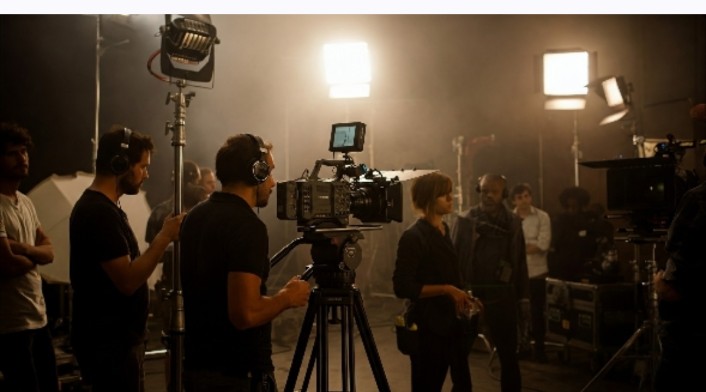In video production, audio design is instrumental in shaping the overall quality and impact of the final product. However, audio production can become expensive if you’re not careful about budgeting. Whether you’re working on a film, commercial, corporate video, or any other type of project, there are several ways to save money on audio design without compromising quality. Below, I’ll walk you through some effective strategies to optimize your audio costs in the production process, from pre-production planning to post-production sound mixing.
1. Pre-Production Planning: Focus on Sound Design Early
One of the best ways to save money on audio design is to plan thoroughly during pre-production. A strong audio plan will save time during the shoot and the post-production phase, reducing the need for expensive fixes later on. This means understanding the types of sounds you’ll need and how you plan to capture them.
- Sound Planning: Consider whether you need a detailed sound design or if you can use stock sounds. For example, ambient sounds or foley effects that would normally be recorded in post-production may be found in high-quality sound libraries.
- Location Selection: Choose locations where you can control the environment, minimizing the need for heavy noise reduction or ADR (Automated Dialogue Replacement). Filming in noisy locations (such as busy streets) may force you to spend extra time cleaning up audio in post-production.
2. On-Set Sound Recording: Efficiency is Key
The sound you record during the shoot will have a direct impact on your post-production work. By capturing clean, high-quality sound on set, you’ll save time in the editing and mixing phases, reducing the need for expensive fixes.
- Use High-Quality Equipment: Invest in a good boom microphone and shotgun mic. While you don’t need the most expensive gear, using quality equipment during the shoot will significantly reduce the need for expensive sound corrections later.
- Record Atmosphere and Ambience: Capture ambient sounds on location when you’re filming. Having these sounds in your library will save time and money by reducing the need to find or create them in post-production. It’s a small task that can save you a lot of hassle later.
- Professional Boom Operators: If you’re working with dialogue-heavy content, it might be worth investing in an experienced boom operator. A skilled operator can capture cleaner sound with minimal interference, saving you from the cost of re-recording dialogue in post.
3. Utilize Free or Affordable Sound Libraries
Post-production sound design often involves adding various sound effects, background music, and ambient noises to the final mix. Many professional sound designers spend significant budgets on custom-created sounds or premium sound libraries. However, you can save money by using free or affordable sound libraries available online.
- Free Sound Libraries: Websites like FreeSound.org offer a wide variety of free sound effects for non-commercial or commercial use (with attribution). Many libraries contain high-quality recordings that can be used for everything from footsteps to door creaks.
- Affordable Paid Libraries: If you’re willing to invest a bit, you can access budget-friendly sound libraries on platforms like Pro Sound Effects. Packages like foley from Pro Sound Effects provide extensive collections of sound effects that can be downloaded and used in multiple projects.
- Open Source and Creative Commons: Look for audio files released under Creative Commons licenses. Many talented sound designers share their work freely, and you can find great resources without paying a premium.
4. Mixing and Mastering: DIY Options and Software Solutions
Mixing and mastering can quickly add up if you’re outsourcing to a professional sound designer or engineer. However, you can save money in this area by using affordable software and doing some of the work yourself. Of course, this depends on your expertise and the complexity of the project, but there are tools and techniques that can help.
- Affordable Audio Editing Software: If you have the skills, investing in affordable software like Audacity (which is free) or Reaper (reasonably priced) can save you significant amounts of money. Both of these tools allow you to edit, mix, and apply effects to your audio.
- Use Templates: Many audio editors and DAWs (Digital Audio Workstations) offer pre-made templates or projects designed for specific uses (such as voiceover, podcasting, or sound design). These can help speed up the process and reduce the need for costly sound engineers to fine-tune each track.
- Invest in Affordable Plugins: You don’t have to buy expensive audio plugins to achieve professional results. There are many high-quality, budget-friendly plugins that can give your project a polished sound. For example, free EQs, compressors, and reverbs can be found on sites like Plugin Boutique, or you can use the built-in effects that come with your editing software.
5. ADR (Automated Dialogue Replacement): Consider Cost-Effective Alternatives
In some cases, you may need to re-record dialogue in post-production (ADR), especially if the original recordings from the set are compromised by noise or other issues. While ADR can be expensive due to the need for a recording studio and voice talent, there are more affordable alternatives.
- DIY ADR Setup: If you have access to a quiet space, you can set up a basic home ADR studio. By using a decent microphone, a pop filter, and soundproofing your space, you may be able to record the necessary dialogue yourself or with a lower-cost sound engineer.
- Voiceover Artists and Online Services: If you need additional dialogue or voiceover work, consider using affordable online platforms like Voices.com or Fiverr. These sites offer access to a wide range of freelance voice talent at various price points.
6. Collaboration and Networking
Building relationships within the video production and sound design communities can open doors to cost-effective solutions. If you’re part of a larger network, you might find opportunities to collaborate with sound designers and audio engineers who can offer discounts or barter services in exchange for other forms of work (such as video editing or graphic design).
- Interns and Students: If you’re open to working with newer talent, consider bringing in interns or students studying sound design. Many are eager to work on real-world projects and are willing to provide their services at a fraction of the cost of a professional sound designer.
- Bartering Services: If you know someone in the sound industry, consider negotiating a barter deal. If you have video production skills or equipment, you might be able to exchange services rather than paying out of pocket.
Conclusion
Saving money on audio design in video production doesn’t necessarily mean cutting corners or sacrificing quality. By planning ahead, recording clean audio on set, using affordable sound libraries, and leveraging cost-effective tools and talent, you can maintain a high standard while keeping costs down. Investing time and effort in the pre-production and production phases can lead to significant savings in post-production, allowing you to focus your budget on the most critical elements of your project. Whether you’re working on a small-scale project or a larger production, these strategies can help you optimize your audio workflow without breaking the bank.










